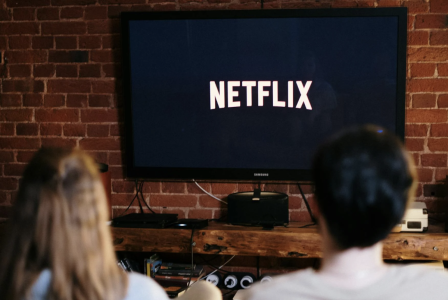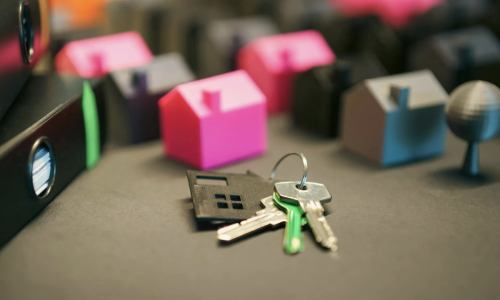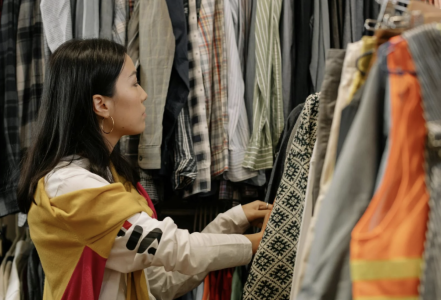What people are refusing to buy now—and why these once-affordable items are being ditched
By
Veronica E.
- Replies 0
If you’ve ever stared at a price tag and thought, “There’s no way I’m paying that,” you’re not alone.
From $40 pizza deliveries to software subscriptions that never end, everyday items and services have quietly crept into luxury territory.
For many, it’s not just about budgeting anymore—it’s about principle.
A growing number of consumers are pushing back, refusing to spend on things that once seemed reasonable.
Whether it’s frustration, fatigue, or a desire for change, people are drawing the line—and rethinking how they shop, dine, and live.

The subscription squeeze
Remember when buying software meant a one-time payment and a CD-ROM?
Now, even basic programs come with monthly fees.

As one person complained, “$70 a year for Microsoft Word? No, thank you.”
And it’s not just tech—streaming services, appliances, and even storage come with recurring costs.
Subscription fatigue is real, and many are opting out entirely unless something is free or truly essential.
Living alone has become a luxury
For single people, the rising cost of living feels especially punishing.
One commenter said, “Life would be cheaper if I had a boyfriend,” and others echoed the sentiment.

When you're paying full price for rent, groceries, and utilities without anyone to split the costs, even simple pleasures feel out of reach.
While independence is empowering, it can also be expensive in today’s economy.
Also read: Forget expensive cleaners! This 49¢ cleaning find at Target works wonders
Pizza prices are out of control
Pizza used to be the go-to for a cheap and easy meal.
Now, it's practically a splurge. “$40 for delivery before tip?” one person scoffed.
With delivery fees and service charges stacking up, many people are heading back to the kitchen to make homemade pies—or waiting for deep discounts.

Airbnb’s not so budget-friendly anymore
Once hailed as a money-saving alternative to hotels, Airbnb has earned a new reputation: overpriced and overcomplicated.
“I’d rather stay in a motel—no extra fees!” said one former fan.
Between cleaning charges, long lists of rules, and inflated prices, travelers are starting to skip Airbnb in favor of simpler, more affordable accommodations.

Also read: Stop wasting money today: The grocery items that are draining your wallet revealed!
The high cost of parenthood
The price of raising kids has soared to the point that many are rethinking family plans.
“I’d love to have at least one, but it’s just not financially sustainable right now,” one person shared.
From baby formula to daycare, every stage comes with hefty expenses.
For some, the dream of parenthood is being postponed—or abandoned entirely.

Concerts? Only if they’re free
Once an exciting splurge, concerts are now priced like luxury events.
“I won’t go unless it’s free—$350 to sit in the nosebleeds is absurd,” one music lover said.
Add in ticketing fees and dynamic pricing, and even longtime fans are choosing to stay home and stream the show instead.

Printer ink is still a scam
If your printer says “low ink,” don’t panic—many people have learned to ignore it.
“It’s been warning me for over a year and still prints fine,” one person said.
With ink often priced higher per ounce than luxury perfume, consumers are getting creative: stretching cartridges, switching to refillable options, or avoiding printers altogether.

Also read: Sneaky ways supermarkets make you overspend—without you realizing it
Childcare feels broken—for everyone
Parents are struggling to find affordable, trustworthy childcare—and the people providing it often aren’t faring much better.
One parent noted that some sitters charge $50 an hour without much experience, while others shared horror stories of overcrowded or unsafe daycares.
Even former childcare workers agree the system isn’t working for anyone.
Many are calling for government-subsidized childcare to ease the pressure on both sides.

Even grocery shopping feels like a splurge
It’s not just big purchases that hurt—many people are rethinking what they buy at the grocery store.
Everyday staples like butter, cheese, and lettuce have become shockingly expensive.
As a result, shoppers are turning to generic brands, farmers’ markets, and strategic meal planning.
Bulk buying and stretching ingredients have become essential skills for staying within budget.

Also read: Could your next fast food order cost more? Here's what’s changing this July
Impulse fashion is out—thrift is in
The days of spontaneous shopping sprees are fading.
With clothing prices rising and fast fashion under fire, more people are turning to thrift shops and clothing swaps.
Some are even mending or tailoring clothes at home to get more life out of their wardrobes.
The trend is shifting toward thoughtful, long-lasting purchases over quick buys.

Home cooking replaces dining out
Dining out used to be a casual treat.
But as restaurant prices climb, a simple meal can cost as much as a full week’s groceries.
In response, many people have rediscovered the joys of cooking.
From baking bread to hosting virtual potlucks, the kitchen is back in style—and it’s saving people serious money.

Also read: Your phone has a hidden screen that could help you avoid expensive scams—here’s how to find it
Why everything feels more expensive
A mix of inflation, labor shortages, supply chain disruptions, and profit-driven pricing has pushed costs higher across the board.
Companies are embracing subscription models and dynamic pricing to squeeze more from consumers.
The result? Many feel they’re paying more for less—and they’re fed up.
How to push back and save
As prices continue to rise, many people are cutting back on everyday purchases that once felt routine.
From streaming services to takeout meals, spending habits are shifting toward practicality.
These changes reflect a broader effort to adapt, save, and take back control of the budget.
Read next: Living the American Dream for less: Discover the most affordable US city that still requires a six-figure salary

Everyone has a limit. Maybe it’s $10 cereal, $5 eggs, or an overpriced night out. We want to hear from you—what items have you stopped buying because of cost, and how are you adjusting?
Drop your thoughts in the comments and let’s swap ideas for saving, surviving, and standing our ground in a world of rising prices.
From $40 pizza deliveries to software subscriptions that never end, everyday items and services have quietly crept into luxury territory.
For many, it’s not just about budgeting anymore—it’s about principle.
A growing number of consumers are pushing back, refusing to spend on things that once seemed reasonable.
Whether it’s frustration, fatigue, or a desire for change, people are drawing the line—and rethinking how they shop, dine, and live.

Many consumers are drawing the line on overpriced goods and services—refusing to pay for things that no longer feel worth the cost. Image Source: Pexels / Monstera Production.
The subscription squeeze
Remember when buying software meant a one-time payment and a CD-ROM?
Now, even basic programs come with monthly fees.

Streaming giants like Netflix, once seen as affordable entertainment, are now topping the list of services people are canceling due to rising subscription costs. Image Source: Pexels / cottonbro studio.
As one person complained, “$70 a year for Microsoft Word? No, thank you.”
And it’s not just tech—streaming services, appliances, and even storage come with recurring costs.
Subscription fatigue is real, and many are opting out entirely unless something is free or truly essential.
Living alone has become a luxury
For single people, the rising cost of living feels especially punishing.
One commenter said, “Life would be cheaper if I had a boyfriend,” and others echoed the sentiment.

Living alone has become increasingly expensive, with many singles feeling the financial strain of covering all costs without a partner to split the bills. Image Source: Pexels / Jakub Zerdzicki.
When you're paying full price for rent, groceries, and utilities without anyone to split the costs, even simple pleasures feel out of reach.
While independence is empowering, it can also be expensive in today’s economy.
Also read: Forget expensive cleaners! This 49¢ cleaning find at Target works wonders
Pizza prices are out of control
Pizza used to be the go-to for a cheap and easy meal.
Now, it's practically a splurge. “$40 for delivery before tip?” one person scoffed.
With delivery fees and service charges stacking up, many people are heading back to the kitchen to make homemade pies—or waiting for deep discounts.

What used to be an easy dinner option is now a pricey indulgence—many are saying no to $40 pizza deliveries and choosing to cook at home instead. Image Source: Pexels / Sydney Troxell.
Airbnb’s not so budget-friendly anymore
Once hailed as a money-saving alternative to hotels, Airbnb has earned a new reputation: overpriced and overcomplicated.
“I’d rather stay in a motel—no extra fees!” said one former fan.
Between cleaning charges, long lists of rules, and inflated prices, travelers are starting to skip Airbnb in favor of simpler, more affordable accommodations.

Once a budget-friendly travel alternative, Airbnb is now facing backlash as added fees and rules push travelers back toward traditional hotels. Image Source: Pexels / cottonbro studio.
Also read: Stop wasting money today: The grocery items that are draining your wallet revealed!
The high cost of parenthood
The price of raising kids has soared to the point that many are rethinking family plans.
“I’d love to have at least one, but it’s just not financially sustainable right now,” one person shared.
From baby formula to daycare, every stage comes with hefty expenses.
For some, the dream of parenthood is being postponed—or abandoned entirely.

For many families, the rising cost of raising children—from diapers to daycare—has made parenthood feel financially out of reach. Image Source: Pexels / Vidal Balielo Jr.
Concerts? Only if they’re free
Once an exciting splurge, concerts are now priced like luxury events.
“I won’t go unless it’s free—$350 to sit in the nosebleeds is absurd,” one music lover said.
Add in ticketing fees and dynamic pricing, and even longtime fans are choosing to stay home and stream the show instead.

Sky-high ticket prices are making live concerts a luxury—many fans now opt to stream the show from home instead. Image Source: Pexels / Thibault Trillet.
Printer ink is still a scam
If your printer says “low ink,” don’t panic—many people have learned to ignore it.
“It’s been warning me for over a year and still prints fine,” one person said.
With ink often priced higher per ounce than luxury perfume, consumers are getting creative: stretching cartridges, switching to refillable options, or avoiding printers altogether.

Frustrated by overpriced ink and constant low-level warnings, many printer users are stretching cartridges to the last drop—or ditching printers altogether. Image Source: Pexels / George Milton.
Also read: Sneaky ways supermarkets make you overspend—without you realizing it
Childcare feels broken—for everyone
Parents are struggling to find affordable, trustworthy childcare—and the people providing it often aren’t faring much better.
One parent noted that some sitters charge $50 an hour without much experience, while others shared horror stories of overcrowded or unsafe daycares.
Even former childcare workers agree the system isn’t working for anyone.
Many are calling for government-subsidized childcare to ease the pressure on both sides.

With skyrocketing costs and limited options, many parents are struggling to find affordable, reliable childcare in today’s economy. Image Source: Pexels / Andrea Piacquadio.
Even grocery shopping feels like a splurge
It’s not just big purchases that hurt—many people are rethinking what they buy at the grocery store.
Everyday staples like butter, cheese, and lettuce have become shockingly expensive.
As a result, shoppers are turning to generic brands, farmers’ markets, and strategic meal planning.
Bulk buying and stretching ingredients have become essential skills for staying within budget.

Even basic grocery items now come with sticker shock, pushing shoppers to rethink their lists and seek out budget-friendly alternatives. Image Source: Pexels / Pixabay.
Also read: Could your next fast food order cost more? Here's what’s changing this July
Impulse fashion is out—thrift is in
The days of spontaneous shopping sprees are fading.
With clothing prices rising and fast fashion under fire, more people are turning to thrift shops and clothing swaps.
Some are even mending or tailoring clothes at home to get more life out of their wardrobes.
The trend is shifting toward thoughtful, long-lasting purchases over quick buys.

Thrifting has become a popular way to save money and shop more sustainably as clothing prices continue to rise. Image Source: Pexels / cottonbro studio.
Home cooking replaces dining out
Dining out used to be a casual treat.
But as restaurant prices climb, a simple meal can cost as much as a full week’s groceries.
In response, many people have rediscovered the joys of cooking.
From baking bread to hosting virtual potlucks, the kitchen is back in style—and it’s saving people serious money.

As dining out gets more expensive, home cooking is making a comeback—helping people save money while enjoying meals made from scratch. Image Source: Pexels / On Shot.
Also read: Your phone has a hidden screen that could help you avoid expensive scams—here’s how to find it
Why everything feels more expensive
A mix of inflation, labor shortages, supply chain disruptions, and profit-driven pricing has pushed costs higher across the board.
Companies are embracing subscription models and dynamic pricing to squeeze more from consumers.
The result? Many feel they’re paying more for less—and they’re fed up.
How to push back and save
- Get creative: Try free or low-cost alternatives like open-source software or DIY pizza nights.
- Share and swap: Split subscriptions or bulk purchases with family and friends.
- Support local: Neighborhood businesses often offer better value and personalized service.
- Speak up: Let companies know when prices feel unreasonable—feedback can sometimes spark change.
As prices continue to rise, many people are cutting back on everyday purchases that once felt routine.
From streaming services to takeout meals, spending habits are shifting toward practicality.
These changes reflect a broader effort to adapt, save, and take back control of the budget.
Read next: Living the American Dream for less: Discover the most affordable US city that still requires a six-figure salary
Key Takeaways
- Rising costs are pushing many people to stop buying everyday items like software, takeout, and clothing that used to be affordable.
- Single individuals are feeling especially stretched, as they shoulder full housing and grocery costs alone.
- Childcare is becoming too expensive and unreliable, prompting calls for systemic reform and better support for both parents and providers.
- Consumers are adapting with strategies like thrift shopping, home cooking, and subscription sharing to offset inflation and protect their budgets.
Everyone has a limit. Maybe it’s $10 cereal, $5 eggs, or an overpriced night out. We want to hear from you—what items have you stopped buying because of cost, and how are you adjusting?
Drop your thoughts in the comments and let’s swap ideas for saving, surviving, and standing our ground in a world of rising prices.






